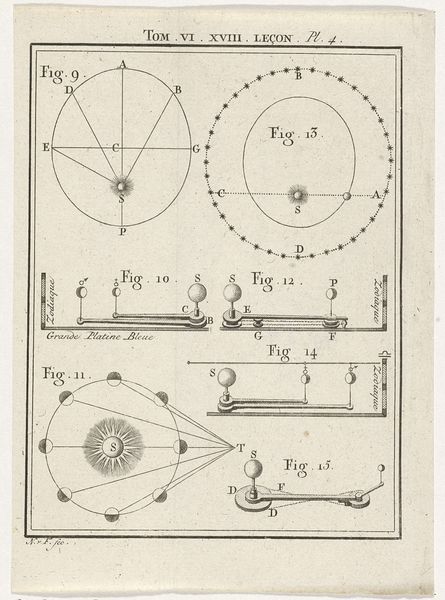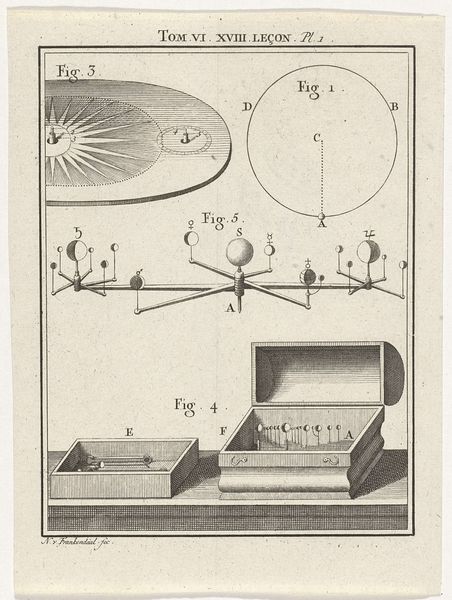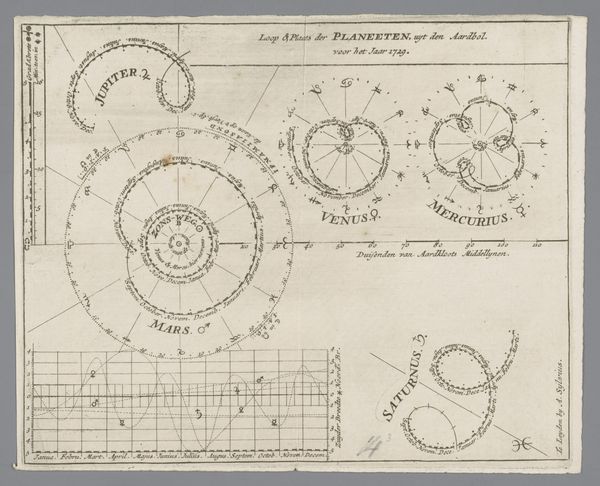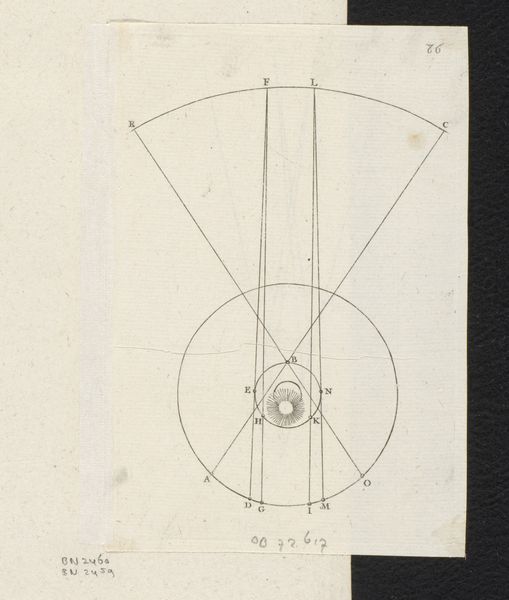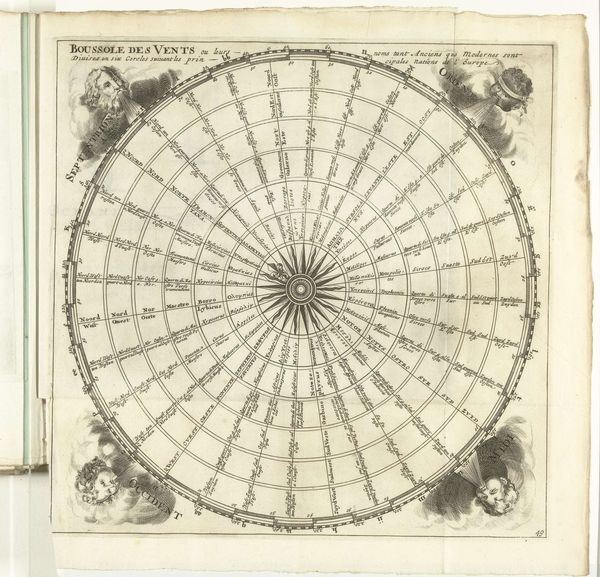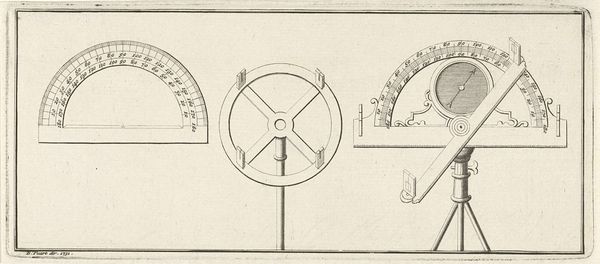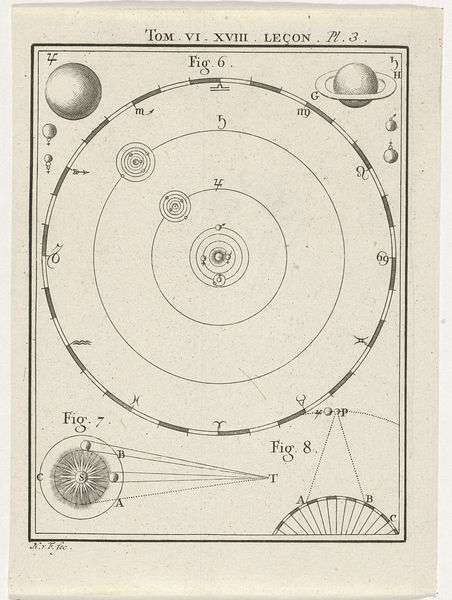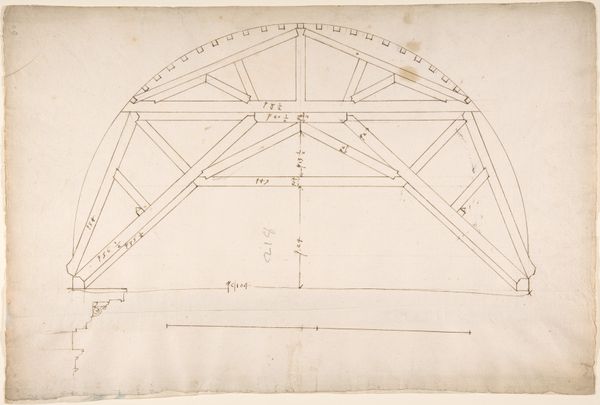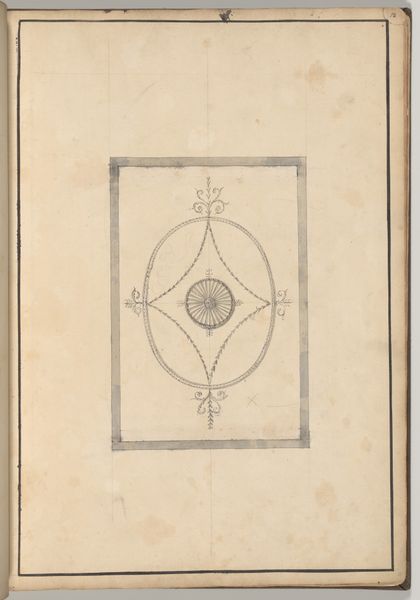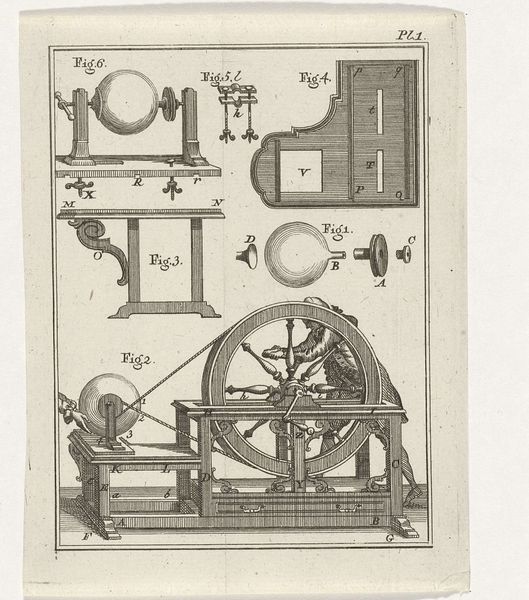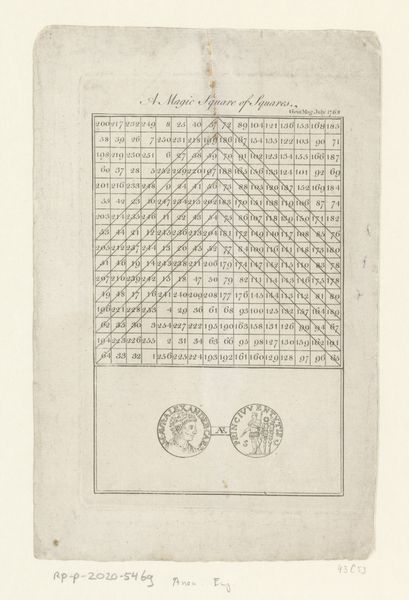
print, engraving
# print
#
11_renaissance
#
geometric
#
engraving
Dimensions: height 287 mm, width 197 mm
Copyright: Rijks Museum: Open Domain
Curator: I’m struck by the almost eerie precision of this image. Editor: This is "Geometrische figuren in cirkels" by Gabriel Kramer, created around 1610. It’s an engraving, demonstrating geometrical figures within circles. A seemingly technical exercise, but with implications far beyond the purely mathematical. Curator: I agree. Look at the rigid lines and formalized structures—it's hard not to think of Renaissance societal structures mirrored in this ordered worldview. The rise of scientific thinking also emerges from the control and structure within these geometric configurations. This speaks to that period’s need to categorize, control, and impose order on the natural world. It’s as if societal desires for understanding are manifest within these simple shapes. Editor: True, the social context is vital. I look at it as a product of skill, process, labor, and how this kind of knowledge was circulated. How did Kramer learn engraving? Who did he work for, and who was the intended audience for this print? Also, this engraving serves a purpose; it wasn’t created solely as fine art. Was it used to construct buildings, navigation tools, or perhaps weaponry? Curator: The text on the work confirms its instructive intentions! You are encouraged to accurately divide your circles and thus improve and perhaps find the one true division. These elements of craftsmanship point toward a connection to gender and class as well. Guilds, the transmission of knowledge, the apprenticeship structure: so much of that was based on who was excluded, particularly women. It highlights a clear power dynamic influencing the dissemination and the practical implementation of geometrical understanding. Editor: Absolutely. These objects and this engraving show the relationship of art with craft and with the building of capital and technology in society at large. Without an understanding of geometry and craftsmanship, there’s no way this work could have been created and mass produced as an engraving. It reflects its social moment as one where art, craft and capitalism were intertwined. Curator: I am captivated by the intersection of science, philosophy, and gendered power dynamics made visible through this artwork. Editor: Yes. A powerful statement on labor and modes of production, reminding us how technique and skill shaped the period’s societal framework and artistic creation.
Comments
No comments
Be the first to comment and join the conversation on the ultimate creative platform.
